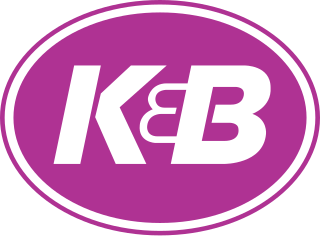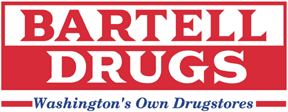
A sit-in or sit-down is a form of direct action that involves one or more people occupying an area for a protest, often to promote political, social, or economic change. The protestors gather conspicuously in a space or building, refusing to move unless their demands are met. The often clearly visible demonstrations are intended to spread awareness among the public, or disrupt the goings-on of the protested organisation. Lunch counter sit-ins were a nonviolent form of protest used to oppose segregation during the civil rights movement, and often provoked heckling and violence from those opposed to their message.

The Jean Coutu Group (PJC) Inc. is a Canadian drugstore chain headquartered in Varennes, Quebec. It has more than 400 franchised locations in New Brunswick, Ontario and Quebec under the PJC Jean Coutu, PJC Clinique, and PJC Santé banners. The company was once the third largest distributor and retailer of pharmaceuticals and related products in North America, with nearly 2,200 drug stores. Its American stores have been sold to Rite Aid.

Eckerd Corporation was an American drug store chain that was headquartered in Largo, Florida, and toward the end of its life, in Warwick, Rhode Island.

Genovese Drug Stores was a pharmacy chain with stores in New York City, Long Island, northern New Jersey, Fairfield County, Connecticut, and Hartford County, Connecticut. It was acquired by JCPenney in 1998 and merged into its Eckerd Corporation subsidiary.
S. H. Kress & Co. was the trading name of a chain of five and dime retail department stores in the United States established by Samuel Henry Kress. It operated from 1896 to 1981. In the first half of the 20th century, there were Kress stores with ornamented architecture in hundreds of cities and towns.

Rite Aid is an American drugstore chain based in Philadelphia, Pennsylvania. It was founded in 1962 in Scranton, Pennsylvania, by Alex Grass under the name Thrift D Discount Center. The company ranked No. 148 in the Fortune 500 list of the largest United States corporations by total revenue.

The Greensboro sit-ins were a series of nonviolent protests in February to July 1960, primarily in the Woolworth store—now the International Civil Rights Center and Museum—in Greensboro, North Carolina, which led to the F. W. Woolworth Company department store chain removing its policy of racial segregation in the Southern United States. While not the first sit-in of the civil rights movement, the Greensboro sit-ins were an instrumental action, and also the best-known sit-ins of the civil rights movement. They are considered a catalyst to the subsequent sit-in movement, in which 70,000 people participated. This sit-in was a contributing factor in the formation of the Student Nonviolent Coordinating Committee (SNCC).

The Nashville sit-ins, which lasted from February 13 to May 10, 1960, were part of a protest to end racial segregation at lunch counters in downtown Nashville, Tennessee. The sit-in campaign, coordinated by the Nashville Student Movement and the Nashville Christian Leadership Council, was notable for its early success and its emphasis on disciplined nonviolence. It was part of a broader sit-in movement that spread across the southern United States in the wake of the Greensboro sit-ins in North Carolina.

K&B was a drug store chain headquartered in New Orleans. Founded in 1905, it expanded to have stores in the United States Gulf Coast region until it was purchased by Rite Aid in 1997.
Skaggs Companies was the predecessor to many famous United States retailing chains, including Safeway, Albertsons, Osco Drug, and Longs Drugs. The company owned several drugstore chains, but all of them were sold. Skaggs Cos. became American Stores in 1979.

Thrifty PayLess Holdings, Inc. was a pharmacy holding company that owned the Thrifty Drugs and PayLess Drug Stores chains in the western United States. The combined company was formed in April 1994 when Los Angeles-based TCH Corporation, the parent company of Thrifty Corporation and Thrifty Drug Stores, Inc., acquired the Kmart subsidiary PayLess Drug Stores Northwest, Inc. At the time of the merger, TCH Corporation was renamed Thrifty PayLess Holdings, Inc. and Thrifty operated 495 stores, PayLess operated 543 stores.

Peoples Drug was a chain of drugstores based in Alexandria, Virginia. Founded in 1905, Peoples was subsequently purchased by Lane Drug in 1975, Imasco in 1984, and finally by CVS in 1990, which continued to run the stores under the Peoples banner until 1994, at which time the stores were converted to CVS, marking the end of the use of the Peoples Drug name.

The Bartell Drug Company, commonly known as Bartell Drugs and referred to by locals as simply "Bartell's", is a chain of pharmacies in the Puget Sound area of Washington state. Bartell Drug stores primarily serve the Seattle area. Bartell's was believed to be the nation's oldest existing family-owned drugstore chain until it was sold to Rite Aid in 2020.

The International Civil Rights Center & Museum (ICRCM) is located in Greensboro, North Carolina, United States. Its building formerly housed the Woolworth's, the site of a nonviolent protest in the civil rights movement. Four students from North Carolina Agricultural and Technical State University started the Greensboro sit-ins at a "whites only" lunch counter on February 1, 1960. The four students were Franklin McCain, Joseph McNeil, Ezell Blair Jr., and David Richmond. The next day there were twenty students. The aim of the museum's founders is to ensure that history remembers the actions of the A&T Four, those who joined them in the daily Woolworth's sit-ins, and others around the country who took part in sit-ins and in the civil rights movement. The Museum is currently supported by earned admissions and Museum Store revenues. The project also receives donations from private donors as a means of continuing its operations. The museum was founded in 1993 and officially opened its doors fifty years to the day after the sit-in movements in Greensboro NC.

Perry Drug Stores was an American retail pharmacy chain founded in 1957 in the city of Pontiac, Michigan, United States. At its peak in the 1980s, Perry operated more than 200 drug stores, primarily in the state of Michigan, as well as 200 Auto Works auto parts stores and fourteen A. L. Price discount health and beauty aids outlets. In 1995, Perry Drug Stores was bought out by Rite Aid, a pharmacy chain based in Camp Hill, Pennsylvania. The Perry chain, which at the time comprised 224 stores, was the largest acquisition ever made by Rite Aid. In addition, this acquisition brought the Rite Aid name to the Detroit area for the first time.

Clarence Lee "Curly" Harris was the store manager at the F. W. Woolworth Company store in Greensboro, North Carolina, during the Greensboro sit-ins in 1960.
The Lane Drug Company of Ohio, was a discount drugstore chain in the United States that was originally based in Toledo, Ohio. On 10 April 1989, the chain was acquired by Rite Aid Corporation of Harrisburg, Pennsylvania, and currently operates as a division of Rite Aid.
The Dockum Drug Store sit-in was one of the first organized lunch counter sit-ins for the purpose of integrating segregated establishments in the United States. The protest began on July 19, 1958 in downtown Wichita, Kansas, at a Dockum Drug Store, in which protesters would sit at the counter all day until the store closed, ignoring taunts from counter-protesters. The sit-in ended three weeks later when the owner relented and agreed to serve black patrons. Though it wasn't the first sit-in, it is notable for happening before the well known 1960 Greensboro sit-ins.

The sit-in movement, sit-in campaign or student sit-in movement, were a wave of sit-ins that followed the Greensboro sit-ins on February 1, 1960 in North Carolina. The sit-in movement employed the tactic of nonviolent direct action and was a pivotal event during the Civil Rights Movement.
The Katz Drug Store sit-in was one of the first sit-ins during the civil rights movement, occurring between August 19 and August 21, 1958, in Oklahoma City, Oklahoma. In protest of racial discrimination, black schoolchildren sat at a lunch counter with their teacher demanding food, refusing to leave until they were served. They sought to end the racial segregation of eating places in their city, sparking a sit-in movement in Oklahoma City that lasted for years.














